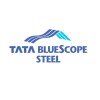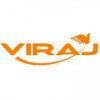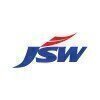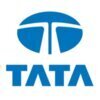Filter interviews by
Bombay Steel Interview Questions and Answers
Be the first one to contribute and help others!
Interview questions from similar companies

Field Executive Interview Questions & Answers
Captain Steel India Limitedposted on 25 Jul 2024
(2 Questions)
- Q1. What is steel grade?
- Ans.
Steel grade refers to the quality and composition of steel, which determines its properties and applications.
Steel grade is a classification that indicates the quality and composition of steel.
It is typically designated by a combination of letters and numbers, such as ASTM A36 or AISI 304.
Different steel grades have different properties, such as strength, hardness, and corrosion resistance.
Steel grades are important fo...
- Q2. Tmt steel how much meter & feet?
- Ans.
TMT steel is typically sold in lengths of 12 meters, which is equivalent to approximately 39.37 feet.
TMT steel is commonly sold in lengths of 12 meters.
12 meters is approximately equal to 39.37 feet.
The length of TMT steel can vary depending on the manufacturer and specific requirements.
Interview Preparation Tips

Manager Automobile maintenance Interview Questions & Answers
Shri Mahavir Ferro Alloysposted on 12 Jun 2024
(2 Questions)
- Q1. Hemm. Maintenance questions
- Q2. Safety questions
Interview Preparation Tips

Territory Sales Manager Interview Questions & Answers
Jindal Industries Private Limitedposted on 13 Apr 2023
I applied via Approached by Company

(2 Questions)
- Q1. Tell me about your work history.
- Q2. Tell me about your reason for leaving last job.
Interview Preparation Tips

I applied via Company Website and was interviewed in Aug 2022. There were 3 interview rounds.

(4 Questions)
- Q1. Tell me about your self?
- Q2. Family background question like what my parents do, what my brother do?
- Q3. My previous work company related questions
- Q4. My present company related questions like do you know about slr metaliks ltd, slr metaliks main products etc
(7 Questions)
- Q1. Centrifugal pump & reciprocating pump different
- Ans.
Centrifugal pumps use impellers to create a flow, while reciprocating pumps use pistons or diaphragms to create pressure.
Centrifugal pumps are more commonly used for high flow rate, low pressure applications.
Reciprocating pumps are better suited for high pressure, low flow rate applications.
Centrifugal pumps are generally more efficient than reciprocating pumps.
Examples of centrifugal pumps include water pumps and sewa...
- Q2. What is bearing?type of bearing? identify bearing like -30215
- Ans.
A bearing is a machine element that constrains relative motion to only the desired motion and reduces friction between moving parts.
Bearings are used in various applications such as automobiles, airplanes, and industrial machinery.
There are different types of bearings such as ball bearings, roller bearings, and plain bearings.
30215 is a tapered roller bearing commonly used in automotive and industrial applications.
- Q3. Gear box use? Gear box check list ? Which company gear box use
- Ans.
Gear boxes are used in various machines to control speed and torque. Different companies manufacture gear boxes with varying specifications.
Gear boxes are used in automobiles, industrial machinery, and wind turbines.
A gear box checklist includes checking for leaks, proper lubrication, and wear and tear of gears.
Companies like Siemens, Bonfiglioli, and SEW Eurodrive manufacture gear boxes.
The choice of gear box depends
- Q4. Belt specifications , conveyor belt maintenance question, type of safety use in conveyor line etc
- Q5. Motor specifications, company name
- Q6. Previous company Compressor pressure, motor power , motor rpm
- Q7. V -belt 1 break then what you do 1 belt change or a set of belt change
Interview Preparation Tips

Part Time job only for Hassan Interview Questions & Answers
Hospet Steelsposted on 23 Nov 2022
I applied via Company Website and was interviewed in Oct 2022. There was 1 interview round.
(2 Questions)
- Q1. How to test the short circuit terminal
- Ans.
To test the short circuit terminal, use a multimeter to measure the resistance between the terminal and ground.
Set the multimeter to the resistance (ohms) mode.
Disconnect the power source from the circuit.
Connect one probe of the multimeter to the short circuit terminal and the other probe to a known ground point.
If the multimeter shows a very low resistance reading (close to zero), it indicates a short circuit.
If the ...
- Q2. To test how much electricity is passing through wires
Interview Preparation Tips
- EEE
- Power System
- Electrical Works
- Electrical Machines

(3 Questions)
- Q1. Discussion regarding subject matter , Process and area of working
- Q2. Role and people working under you,to whom you reports.
- Q3. What activities you finalize at your end and
(4 Questions)
- Q1. Salary negotiation ..
- Q2. Notice period in current company
- Q3. Reason for changing a job.
- Q4. Why I should recruit you.
Interview Preparation Tips
, Discussion around 20-25 minutes,same day afternoon they ask for salary slip and current employer support documents.
After that salary negotiation and nextday Offer Letter.

I applied via Company Website and was interviewed in Jul 2022. There were 2 interview rounds.

(2 Questions)
- Q1. How much type Haydraulic pump
- Ans.
There are various types of hydraulic pumps used in mechanical systems.
Different types of hydraulic pumps include gear pumps, vane pumps, and piston pumps.
Gear pumps are simple and cost-effective, but have lower efficiency.
Vane pumps are more efficient and provide higher pressure, but are more complex.
Piston pumps are highly efficient and can handle high pressures, but are more expensive.
The choice of hydraulic pump dep...
- Q2. How much type gear teeth
- Ans.
The question is unclear and requires clarification.
Request clarification on what is meant by 'type gear teeth'.
Ask for more information or context to provide an accurate answer.
Without further details, it is not possible to answer the question.
Interview Preparation Tips

I applied via Recruitment Consulltant

(1 Question)
- Q1. Conveyor Grades, Hydraulic system it's grade tan value, nas value
- Ans. How will you asset for this organisation
(1 Question)
- Q1. What are your achievements, how can you be beneficial for the company.
Interview Preparation Tips
Never lie, please be clear if you don't know

I applied via Approached by Company and was interviewed in Jan 2022. There were 3 interview rounds.

(1 Question)
- Q1. 1)What is your job description 2)Root cause analysis
- Ans.
I am responsible for overseeing the overall operations of the company and ensuring its success. Root cause analysis is a key part of my job.
My job involves managing and directing the company's resources towards achieving its goals
I am responsible for developing and implementing strategies to improve the company's performance
I oversee the work of other executives and ensure that they are working towards the company's ob...
(2 Questions)
- Q1. Family Background with Introduction
- Q2. Expected salary and how much notice period
Interview Preparation Tips

Diploma Engineer Trainee - DET Interview Questions & Answers
Rashmi Groupposted on 12 May 2022
I was interviewed in Apr 2022.
(2 Questions)
- Q1. Tell me something about yourself
- Q2. That are the type of maintenance done in electrical maintenance?
- Ans.
Electrical maintenance includes preventive, corrective, and predictive maintenance.
Preventive maintenance involves routine inspections and servicing to prevent breakdowns.
Corrective maintenance involves repairing or replacing faulty equipment.
Predictive maintenance involves using data analysis to predict when maintenance is needed.
Examples of maintenance tasks include cleaning, lubricating, testing, and replacing parts...
Interview Preparation Tips
Tell us how to improve this page.
Interview Questions for Popular Designations
- Executive Interview Questions
- Design Engineer Interview Questions
- Business Analyst Interview Questions
- Senior Associate Interview Questions
- Graduate Engineer Trainee (Get) Interview Questions
- Associate Software Engineer Interview Questions
- Test Engineer Interview Questions
- Data Analyst Interview Questions
- Show more
Interview Questions from Similar Companies
Bombay Steel Reviews and Ratings
based on 4 reviews
Rating in categories
|
Sales Manager
3
salaries
| ₹5.5 L/yr - ₹5.5 L/yr |
|
Supervisor
3
salaries
| ₹1.8 L/yr - ₹3.6 L/yr |

Jindal Steel and Power

Bhushan Power & Steel

Viraj Profiles

SHYAM METALICS AND ENERGY
- Home >
- Interviews >
- Bombay Steel Interview Questions








